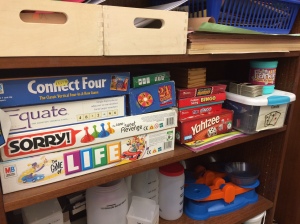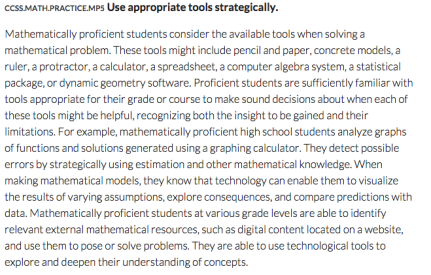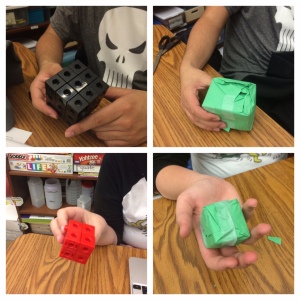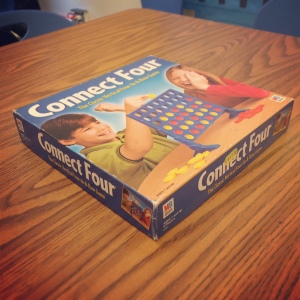This post is inspired by chapter 8 of Steve Leinwand’s book Accessible Mathematics. If you haven’t read this book, do it! Leinwand is a leading voice in the push for math instruction that makes sense to students and will lead to longer lasting mathematical understanding. Chapter 8 is entitled, “How Big, How Far, How Much?” and in it Leinwand encourages this instructional shift:
Tie the math to such questions as How big? How much? How far? to increase the natural use of measurement throughout the curriculum.
He goes on to say that measurement as a mathematical skill is often a “skipped chapter,” but is also one of the most pervasive life skills in the mathematics curriculum. Leinwand goes on to encourage teachers to incorporate measurement as “an ongoing part of daily instruction and the entry point for a larger chunk of the curriculum” (p. 46).
Now you may be saying, “But I have a million other goals and standards and expectations and test prepping and whatnot that I have to do before I teach the kids to use a ruler!”
Well, lucky for you the Standards for Mathematical Practice also have you covered.
“But the content! Where is the content?” you cry? Well here are some content standards I’ve used recently and a simple prompt that will make it all make sense,
What do we need?
Here’s how it went down…
We play a lot of games in my class, there is a picture of my game shelf at the top of this post. Games allow us to have low-risk, high reward conversations about mathematical concepts in a fun environment. But as I looked at my game shelf I thought let’s not play the games today. Let’s investigate the boxes.
We had literally constructed our understanding of volume and surface area of solid figures using cubes and wrapping paper seen above. Now I wanted the students to have a reason to need the formulas for finding volume and surface area of rectangular prisms. So, enter the game boxes.
These were clearly the rectangular prisms we had built with connecting cubes, but in real life! The students wondered aloud why the boxes were on the tables, were we just going to be playing games today? Had Mr. Gael given up on this 3D stuff already? Then I hit them with the prompt:
To find the volume or surface area of these boxes, what do we need to know?
“We need to know how high it goes!” “We need to know how wide it is!” “We need to know how long it is!” “We need to know the measurements!” “We need to know the dimensions!” Almost every student had something to add.
Then the second prompt:
What do we need to get this information?
There was almost a stampede to where the rulers are kept and some even went to get their geometry vocabulary books (which though helpful, would not have given them the appropriate information in this particular case.) The measurement party was on. Simply by asking students to first find the dimensions of the game boxes during the “do now” allowed them to practice using appropriate tools strategically and get the daily measurement instruction Steve Leinwand had advocated for in his book.
Besides, when in your adult life are you handed a problem that looks quite like this…
Except, maybe at Ikea…









Nice read! I think you’re doing a good job of getting students interested in math.
LikeLike
I wonder what would happen if they investigated how and if the game boxes would fit in the expedit shelves.
LikeLike
Thanks for the extension idea, Rachel!
LikeLike